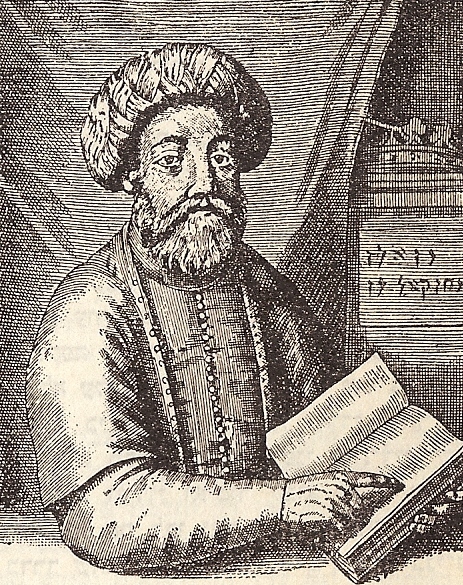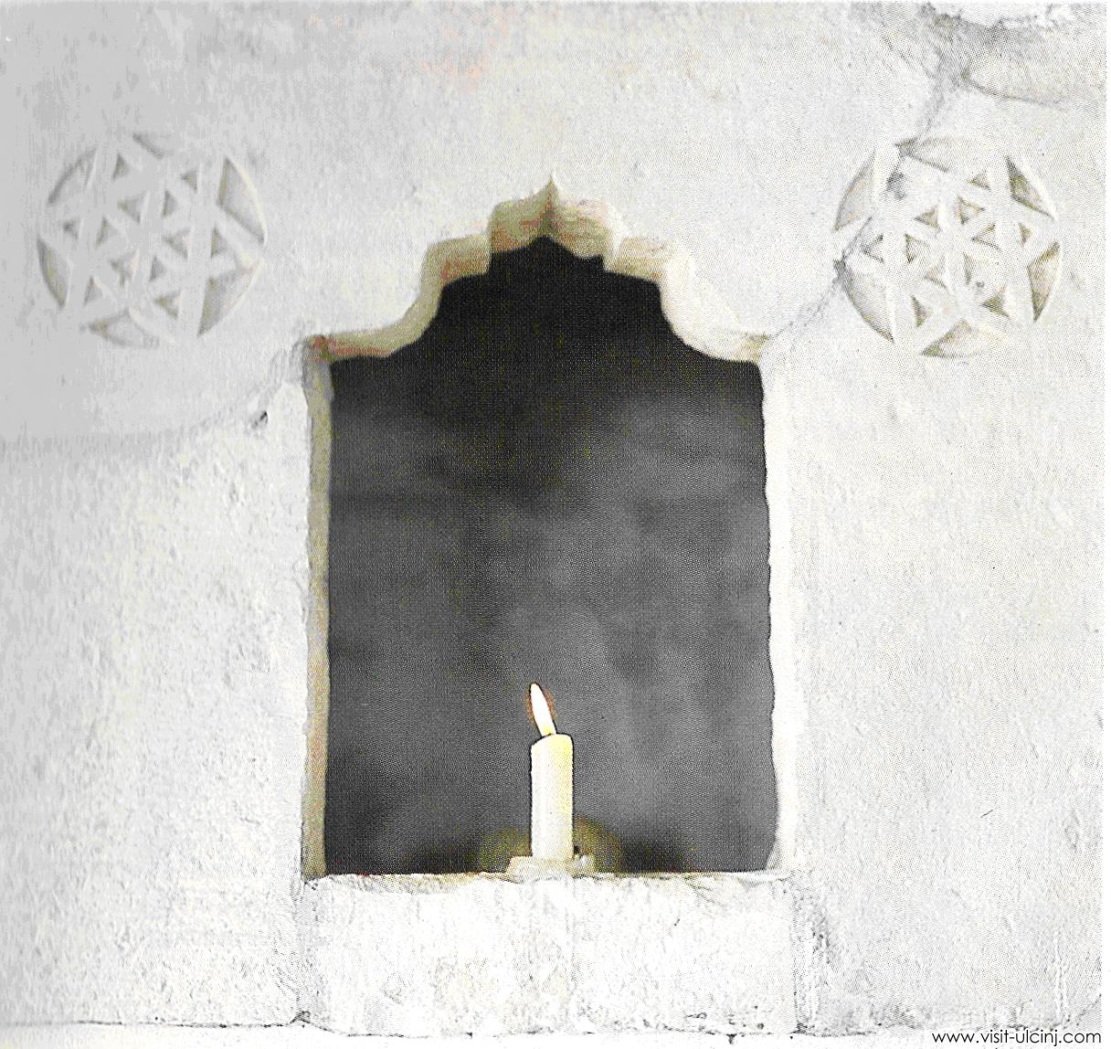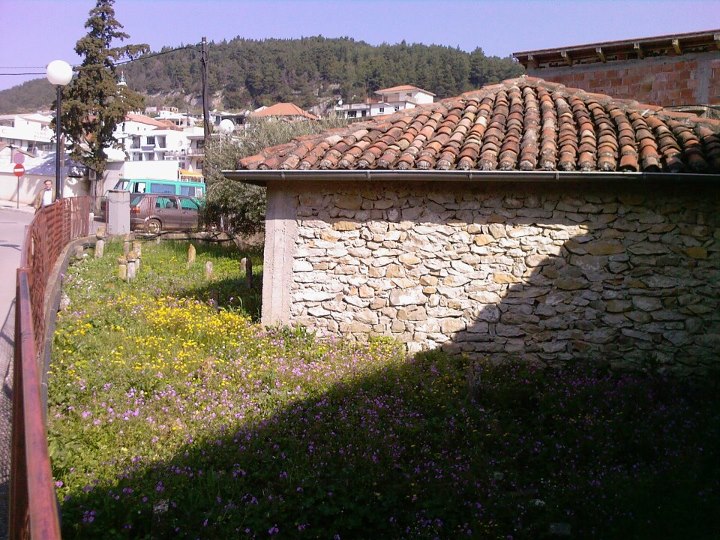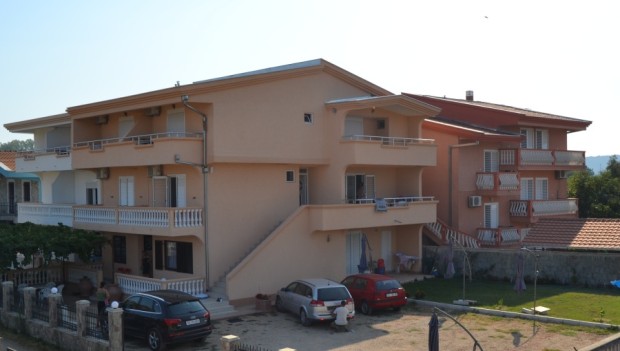 One of the most renowned people at his time and undoubtedly one of the people, who have left indelible traces within the ancient walls of the old town of Ulcinj, unquestionably is Sabataj Sevi. A man who has marked a part of the world‚Äôs cultural heritage and whose figure and doctrine have given a great contribution not only to history here but one can say in world‚Äôs proportions. This man of an extraordinary intelligence and wide education having declared himself a new Messiah, has left a deep track which still today intrigues not only scientists and theologians but ordinary people as well who are trying to explore all the segments of his actions in the Ottoman Empery of course, his influence has spread very quickly beyond the frontiers of the Ottoman Empery and his name was being mentioned with respect in all synagogues of the developed world at the time. Nowadays, we who live near the Balsics‚Äô Tower, where he spent the ten last years of his life, often mention him to many foreign and domestic visitors, trying to present the right dimension of his existence not only here. He was born in Izmir in 1626, in one of the main towns of the Ottoman Empery. In that town lived a big grouping of Jews and in one of the most renowned families was born the man who has at his fortieth year dared to declare himself the new Messiah in such a potent Islamic Country. Sabataj Sevi was already welcomed and respected while young man, scientists and ordinary people would happily listen to him and everybody agreed on the fact that he was predestined to be a leader. During his education he read all the ancient holly books of the Jews and in all these books is mentioned the arrival of the new Messiah. Many before him had the title like Bar Koba, Juda Galile, Judah Makabe and the only one who had it rightfully was Jesus Christ. Within the large population of Jews at Izmir Sabataj Sevi had searched for the freedom, he was a theologian of liberty and understood the liberty is the greatest a man can have in faith. In his preaching, especially on the Talmud, the holly book of Jews, he was so suggestive that everybody thought he was the man of the future, a person to come and take the Jewish people to their once homeland. He was born to be a leader. At the year of forty, encouraged by his genius and some kind of extraordinary internal feeling he declares himself a new Messiah and to all the peoples, to whole of the world in the Ottoman Empery. He sustains that by the mercy of God, a spirit of the Messiah is reincarnated in himself. Since then many have believed in his messianic existence; a movement aroused which culminated in 1666 and in the other parts of the world as well. He was accepted even by the famous Nathan Gazette from Gaza who stated that he is the man they have been waiting for fifteen centuries and great number of Jews came in large groups from various parts of the world waiting, according to the old books, that the new Messiah will take them back to Israel and Palestine.Why 1666 exactly?In many Jewish holly books of the middle age is said and the ancient astrologists sustained that the new messiah will come in 1666 precisely. In fact, according to Judaic astrology, 1666 is the number of the wild animal of apocalypse, 666 plus 1000 years of the Satan‚Äôs rule. As a result, on the basis of the John‚Äôs revelation they have calculated that the day of the world‚Äôs turning point and settlement will be exactly in the year 1666. Then would begin 1000 year long rule of Jesus Christ on the Earth and the dead will rise from their graves and together with the live will step in front of the God for judgment. After that, peace will rein justice, prosperity, Lord‚Äôs rule and paradise on the Earth. It was not just a mere superstition; people have always tried to see the future, at least the immediate one which affected them. All that happened at the time of Sabataj Sevi had religious implications and everything was being explained by religious terms. Salvation, saviour, i.e. the new Messiah, was needed by the Jews because they have been going through humiliations for centuries around the world, each new generation as convinced it has suffered more then the previous ones and it has been going on for generations. In Istanbul, and other big cities in the Ottoman Empery, there have been exoduses of the Jews who came form eastern countries. Therefore there have been large protests, especially at Izmir. In 1666, a Moon eclipse happened, which was rather accurately predicted almost 200 years before by the Jewish, Persian and Arab astrologists. Many of them have interpreted it like the fall of the Ottoman Empery. The idea of the savoiur was accepted generally. Jews called the saviour ‚ÄúMessiah‚Äô and Moslems ‚ÄėMehdi‚Äô. There were various attempts before to pronounce young men from the mosque of Bayazit as Mehdi. They would say the spirit of Mehdi is in them but these attempts were brutally stopped by ‚Äėjanichars‚ÄĚ and the Porta. The great vizier Cypril of Albanian origin, in fact, ruled the Ottoman Empery because the sultan Mehmet IV after his father‚Äôs killing was only 9. After his arrival from Erdena to Istanbul, he invites to his palaces a scientist by the name Abdiu who had written the history of the time and that is how we know a lot about Sabataj Sevi. Of course, the sultan himself has written some scripts and that is the most trustful story and history of this figure that spent the last ten years of his life as a ‚ÄėDizdar‚Äô of the town of Ulcinj on the 3rd floor of the imposing tower of Balsics‚Äô.
One of the most renowned people at his time and undoubtedly one of the people, who have left indelible traces within the ancient walls of the old town of Ulcinj, unquestionably is Sabataj Sevi. A man who has marked a part of the world‚Äôs cultural heritage and whose figure and doctrine have given a great contribution not only to history here but one can say in world‚Äôs proportions. This man of an extraordinary intelligence and wide education having declared himself a new Messiah, has left a deep track which still today intrigues not only scientists and theologians but ordinary people as well who are trying to explore all the segments of his actions in the Ottoman Empery of course, his influence has spread very quickly beyond the frontiers of the Ottoman Empery and his name was being mentioned with respect in all synagogues of the developed world at the time. Nowadays, we who live near the Balsics‚Äô Tower, where he spent the ten last years of his life, often mention him to many foreign and domestic visitors, trying to present the right dimension of his existence not only here. He was born in Izmir in 1626, in one of the main towns of the Ottoman Empery. In that town lived a big grouping of Jews and in one of the most renowned families was born the man who has at his fortieth year dared to declare himself the new Messiah in such a potent Islamic Country. Sabataj Sevi was already welcomed and respected while young man, scientists and ordinary people would happily listen to him and everybody agreed on the fact that he was predestined to be a leader. During his education he read all the ancient holly books of the Jews and in all these books is mentioned the arrival of the new Messiah. Many before him had the title like Bar Koba, Juda Galile, Judah Makabe and the only one who had it rightfully was Jesus Christ. Within the large population of Jews at Izmir Sabataj Sevi had searched for the freedom, he was a theologian of liberty and understood the liberty is the greatest a man can have in faith. In his preaching, especially on the Talmud, the holly book of Jews, he was so suggestive that everybody thought he was the man of the future, a person to come and take the Jewish people to their once homeland. He was born to be a leader. At the year of forty, encouraged by his genius and some kind of extraordinary internal feeling he declares himself a new Messiah and to all the peoples, to whole of the world in the Ottoman Empery. He sustains that by the mercy of God, a spirit of the Messiah is reincarnated in himself. Since then many have believed in his messianic existence; a movement aroused which culminated in 1666 and in the other parts of the world as well. He was accepted even by the famous Nathan Gazette from Gaza who stated that he is the man they have been waiting for fifteen centuries and great number of Jews came in large groups from various parts of the world waiting, according to the old books, that the new Messiah will take them back to Israel and Palestine.Why 1666 exactly?In many Jewish holly books of the middle age is said and the ancient astrologists sustained that the new messiah will come in 1666 precisely. In fact, according to Judaic astrology, 1666 is the number of the wild animal of apocalypse, 666 plus 1000 years of the Satan‚Äôs rule. As a result, on the basis of the John‚Äôs revelation they have calculated that the day of the world‚Äôs turning point and settlement will be exactly in the year 1666. Then would begin 1000 year long rule of Jesus Christ on the Earth and the dead will rise from their graves and together with the live will step in front of the God for judgment. After that, peace will rein justice, prosperity, Lord‚Äôs rule and paradise on the Earth. It was not just a mere superstition; people have always tried to see the future, at least the immediate one which affected them. All that happened at the time of Sabataj Sevi had religious implications and everything was being explained by religious terms. Salvation, saviour, i.e. the new Messiah, was needed by the Jews because they have been going through humiliations for centuries around the world, each new generation as convinced it has suffered more then the previous ones and it has been going on for generations. In Istanbul, and other big cities in the Ottoman Empery, there have been exoduses of the Jews who came form eastern countries. Therefore there have been large protests, especially at Izmir. In 1666, a Moon eclipse happened, which was rather accurately predicted almost 200 years before by the Jewish, Persian and Arab astrologists. Many of them have interpreted it like the fall of the Ottoman Empery. The idea of the savoiur was accepted generally. Jews called the saviour ‚ÄúMessiah‚Äô and Moslems ‚ÄėMehdi‚Äô. There were various attempts before to pronounce young men from the mosque of Bayazit as Mehdi. They would say the spirit of Mehdi is in them but these attempts were brutally stopped by ‚Äėjanichars‚ÄĚ and the Porta. The great vizier Cypril of Albanian origin, in fact, ruled the Ottoman Empery because the sultan Mehmet IV after his father‚Äôs killing was only 9. After his arrival from Erdena to Istanbul, he invites to his palaces a scientist by the name Abdiu who had written the history of the time and that is how we know a lot about Sabataj Sevi. Of course, the sultan himself has written some scripts and that is the most trustful story and history of this figure that spent the last ten years of his life as a ‚ÄėDizdar‚Äô of the town of Ulcinj on the 3rd floor of the imposing tower of Balsics‚Äô.
Punishment and the curse of Sabataj Sevi
Having declared himself as a Messiah, Sevi gave hope to masses of liberation from slavery, hope of religious freedom. The old holly books had promised that. At the time it was all about the new Messiah. Of great help to Sabataj Sevi was Nathan Gazati from Gaza who has confirmed his proclamation of Messiah after what in all synagogues in Italy, England and Germany was talked about Sabataj Sevi as of new Messiah. From Izmir the movement quickly spread even to Istanbul. Having realized the danger of it Cypril decided to stop that euphoria, especially after Sabataj Sevi had sent a letter to Sultan Mehdi IV in which he asks him to abandon the Koran and Mohammed and to embrace the Talmud and Jewish religion and himself as the new Messiah. Cypril ordered than to curse and imprison Sabataj Sevi. However, it did not bother very much his followers because they believed he would get out of the prison riding on a lioness and they would then together set for Israel and Palestine where they will restore their state destroyed in the old age by the Romans and by that prove his messianic abilities. In fact, Sevi had very little chances to get out of dungeon although his supporters believed in his prophecy and divine power.How a Messiah became a MoslemFew lines from a chronicle from The Chronicle of the World by historian Abdija reveals how Sabataj Sevi embraced Moslem faith. By the order of the sultan Sabataj Sevi he was taken of his clothes and he embarrassed covers his lower body and provokes laugh of the sultan. Having seen he was circumcised by the Jewish tradition, sultan asks for an opinion mufti about this self-proclaimed Messiah. The mufti who nourished hate for Shiites and Mystics and who had already punished a philosopher Karabash and many poets, declared Sabataj as sinister as the devil himself. Sultan decided to put Sabataj on a probe telling him he would accept his proclamation of the Messiah if the arrows which would be aimed at him would return back not hurting him. To avoid his secure death, Sabataj Sevi kneeled before the sultan begging for his life because he is no more than a rabbi and in the name of son who will be born that night. In fact, one of the women in the harem gave birth and than the sultan showed his mercy and saved life of Sabataj Sevi.
The life and death of Sabataj Sevi in Ulcinj
Sultan spared life of the self -proclaimed Messiah but his followers did not stop to gather not being able to realize that he is not a Messiah. To prevent further gatherings and unrest viziers advised the sultan to intern Sabataj Sevi in the farthest town of Ottoman Empery, Ulcinj in its tower. Although he was interned, sultan grants him a title of Dizdar, the keeper of the fortress and he comes to antique town of Ulcinj with his escort where he spent the last ten years of his life on the third floor of the Tower of The Balsics. In the same tower died the most known prince of the Balsic family, Djerdj Balsa, after whom the tower was named. In that tower standing proudly on the highest plateau of the old town, Sabataj Sevi finds his rest, reforms the Talmud and read the other theological literature he possessed. He spoke six languages and was a man of an extraordinary intelligence and high education. They say he only twice got out of the town; once he went to visit the Benedictine Monastery  of Rotaci near Bar and the other time he went to visit the ancient town of Svac. He wrote several letters from Ulcinj.

Special mention merits the one he wrote to one of his three wives, Sara Elahun whom he left at Izmir. In several other fragments he mentions Albanians of Ulcinj, he speaks of horrible earthquakes which occurred in this town and of thirty girls who jumped off the walls of the old town to avoid slavery. He, also, describes a particular plant that grows on the walls of the town. He was a man of spoken words and no wonder he did not write much.David‚Äôs star in the Tower of the BalsicsNowadays, on the third floor of the tower there is a David‚Äôs star engraved on the white marble what confirms the thesis he remained a Jew in his spirit. Here one can also see a place where his library was with scripts and books of Helevia, Joseph Ephraim, Isaac Ben Solomina, Ezra Maimonit and others. There was also the first edition of the Cabalist doctrine ‚ÄėZohal‚ÄĚ from 1559 by Djon Bolica, Djerdj Byzantine and Pir Didaku from Ragusa. In 1676 at the age of fifty, Sabataj Sevi dies. The news of his death widely spread in the world, especially among the Jews many of whom still considered him a holly person. According to tradition his death was rather mysterious. According to a myth he died at the moment when he saw a child who fell off a fig tree lying motionless on the ground. The myth has it that the child stood up not hurt at all. According to others, he had already prepared for his death having asked Julius Ambrosian, the man who was a craftsman of embalming humans and animals to embalm his body. It is possible it happened. Surely he is buried near a mosque outside the walls of the town in a special ‚Äúturbe‚ÄĚ although they say his wish had been to be buried on a plateau where from the sea could be seen by those who would come to visit his grave. It is possible that his wish had not been done.

The mysterious ‚Äúturbe‚ÄĚThe ‚Äúturbe‚ÄĚ containing his grave is still today kept well with a particular fanaticism and it is located on a private property. The keepers of the ‚Äėturbe‚ÄĚ mysteriously keep his name and they would never admit that it is about him. In every case, the tradition of the family should be respected, but it is upon us to research his mysterious life and deed in particular within the ancient walls of the old town of Ulcinj. There is no epitaph, there is a wooden sarcophagus and this family with great respect holds it claiming it is about their old ancestor. However, Sabataj Sevi was a great person at his time, the man who managed to proclaim himself the new ‚ÄúMessiah‚ÄĚ, and what is more important wide masses believed in it. Although he accepted Moslem faith, he remains danger to Ottoman Empery till he dies. That‚Äôs why he is interned in Ulcinj. I am convinced that thousands of tourists from all over the world would be coming on pilgrimage to his grave in the case it is absolutely confirmed it is his grave. Standing by his grave is an extraordinary sensation. He is a wonderful historical metaphor and a motive for writing many lines; he is mystery and history at the same time, rather exciting, indescribable event. We can but further reveal his mysterious life and deed and tell about it to our visitors about this glorious figure who marked an entire era. He is of particular interest to us being his name tightly related among other to our town and he is a great part of our illustrious and imposing cultural heritage.
Ulcinj, May 2006                                        
Ismet Karamanaga
Kala – OrganizationUlcinj, Montenegro






